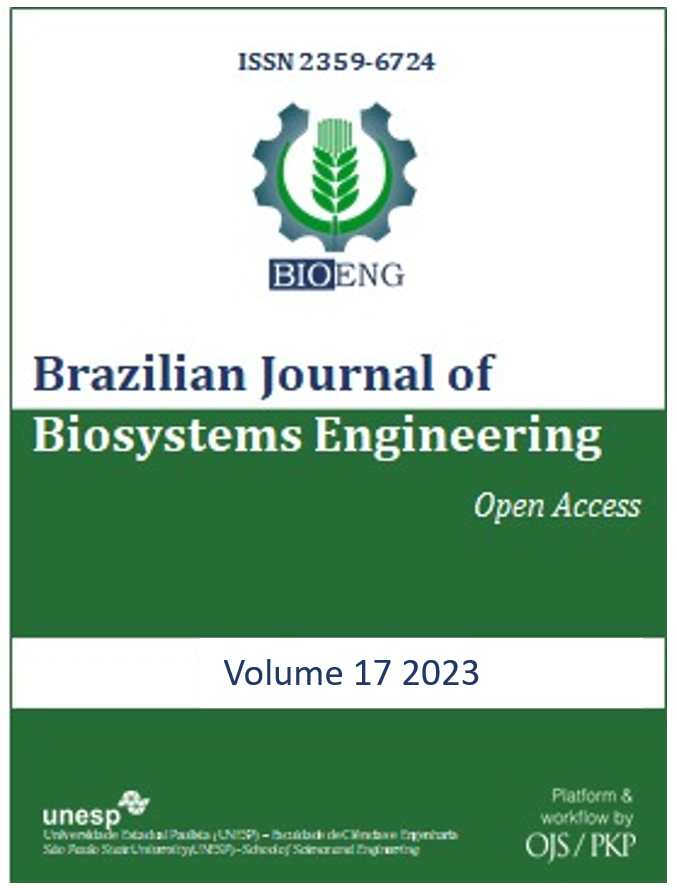The economic importance of the peanuts production chain
DOI:
https://doi.org/10.18011/bioeng.2023.v17.1186Palavras-chave:
Exports, Economic Impact, Development, Technology, SDGsResumo
The importance and economic representativeness of the peanut production chain has grown exponentially in recent years, tending to gain more market share. Background: The study had as its theme the question: What is the economic, technological, social and environmental relevance of the peanut production chain for Brazil? Objective: Conduct a survey of information and data that allow inferring the economic, social and environmental importance of the peanut production chain for Brazil in the global scenario. Methods: The methodology applied was exploratory research "ad hoc" in exploratory theoretical essay of qualitative approach, and analytical descriptive in the report of the findings. Results: Exports grow on a logarithmic scale, in 2020 it had revenues of US$ 427.8 million. The sector generates 42 thousand jobs, and the culture makes it possible to meet social and environmental demands. Conclusions: The adoption of technologies and the improvement of production methods are essential for the continuous progress of the sector with the creation of jobs and the adhesion of new producers, with an increasingly sustainable production, with less environmental impact and reduction of fertilizer waste, with expansion of the productive capacity per planted bushel.Downloads
Referências
Akram, F., Haq, I. ul, Raja, S. I., Mir, A. S., Qureshi, S. S., Aqeel, A., & Shah, F. I. (2022). Current trends in biodiesel production technologies and future progressions: A possible displacement of the petro-diesel. Journal of Cleaner Production, 370, 133479. https://doi.org/10.1016/j.jclepro.2022.133479 DOI: https://doi.org/10.1016/j.jclepro.2022.133479
Bosworth, G., Whalley, J., Fuzi, A., Merrell, I., Chapman, P., & Russell, E. (2023). Rural co-working: New network spaces and new opportunities for a smart countryside. Journal of Rural Studies, 97, 550–559. https://doi.org/10.1016/j.jrurstud.2023.01.003 DOI: https://doi.org/10.1016/j.jrurstud.2023.01.003
Castells, M. (2004). The Network Society. Edward Elgar Publishing. https://doi.org/10.4337/9781845421663 DOI: https://doi.org/10.4337/9781845421663
EMBRAPA. (2014). Sistemas de Produção Embrapa Sistema de Produção de Amendoim. Embrapa Algodão, Sistema de Produção, 7. https://www.spo.cnptia.embrapa.br/conteudo?p_p_id=conteudoportlet_WAR_sistemasdeproducaolf6_1ga1ceportlet&p_p_lifecycle=0&p_p_state=normal&p_p_mode=view&p_p_col_id=column-2&p_p_col_count=1&p_r_p_-76293187_sistemaProducaoId=3803&p_r_p_-996514994_topicoId=3432
FIESP. (2021). Agronegócio do Amendoim no Brasil: Produção, transformação e oportunidades (p. 30). FIESP.
FIESP-DEAGRO. (2022). Agronegócio | Sindicato Nacional das Indústrias de Café Solúvel – SINCS. https://www.fiesp.com.br/sincs/guia-fiesp/agronegocio/
Franco Goulart, D., Porfirio de Almeida, R., Costa Resende, K., Melo da Costa, F. A., & Cortez Bezerra, J. R. (2017). O DESAFIO DA ESTRUTURAÇÃO DA CADEIA PRODUTIVA DO AMENDOIM NO SEMIÁRIDO DO NORDESTE. Organizações Rurais e Agroindustriais, 19(1), 47–59. https://doi.org/10.21714/2238-68902017v19n1p047 DOI: https://doi.org/10.21714/2238-68902017v19n1p047
GT Agenda 2030. (2022). VI Relatório Luz da Sociedade Civil da Agenda 2030 de Desenvolvimento Sustentável Brasil (Relatório Luz sobre a Agenda 2030 no Brasil 2022 VI). https://gtagenda2030.org.br/relatorio-luz/relatorio-luz-2022/
IBGE. (2017). IBGE - Censo Agro 2017. IBGE - Censo Agro 2017. https://censoagro2017.ibge.gov.br/1999-novo-portal/trabalhe-conosco/33078-2022-02-agente-de-pesquisas-e-mapeamento-complementar.html
Jara-Rojas, R., Canales, R., Gil, J. M., Engler, A., Bravo-Ureta, B., & Bopp, C. (2020). Technology adoption and extension strategies in mediterranean agriculture: The case of family farms in Chile. Agronomy, 10(5). Scopus. https://doi.org/10.3390/agronomy10050692 DOI: https://doi.org/10.3390/agronomy10050692
Joao, I. S., & Lourenzani, W. (2007). Análise da cadeia agroindustrial do amendoim na região de Tupã e Marília—SP. Sistemas Agroalimentares e Cadeias Agroindustriais, 20. https://www.researchgate.net/publication/242125709_ANALISE_DA_CADEIA_AGROINDUSTRIAL_DO_AMENDOIM_NA_REGIAO_DE_TUPA_E_MARILIA_-_SP
Rodrigues, R. (2021). Segurança Alimentar Global—Artigo—Portal Embrapa. https://www.embrapa.br/olhares-para-2030/artigo/-/asset_publisher/SNN1QE9zUPS2/content/roberto-rodrigues?inheritRedirect=true
Trade Map. (2022). Trade statistics for international business development Monthly, quarterly and yearly trade data. (Market Analysis and Research, International Trade Centre (ITC)) [2021 global trade indicators in Trade Map]. International Trade Centre. https://www.trademap.org/Index.aspx
Downloads
Publicado
Como Citar
Edição
Seção
Licença
Copyright (c) 2023 Revista Brasileira de Engenharia de Biossistemas

Este trabalho está licenciado sob uma licença Creative Commons Attribution 4.0 International License.
Autores que publicam nesta revista concordam com os seguintes termos:
a) Autores mantém os direitos autorais e concedem à revista o direito de primeira publicação, com o trabalho simultaneamente licenciado sob a Licença Creative Commons Attribution que permite o compartilhamento do trabalho com reconhecimento da autoria e publicação inicial nesta revista.
b) Autores têm autorização para assumir contratos adicionais separadamente, para distribuição não-exclusiva da versão do trabalho publicada nesta revista (ex.: publicar em repositório institucional ou como capítulo de livro), com reconhecimento de autoria e publicação inicial nesta revista.








